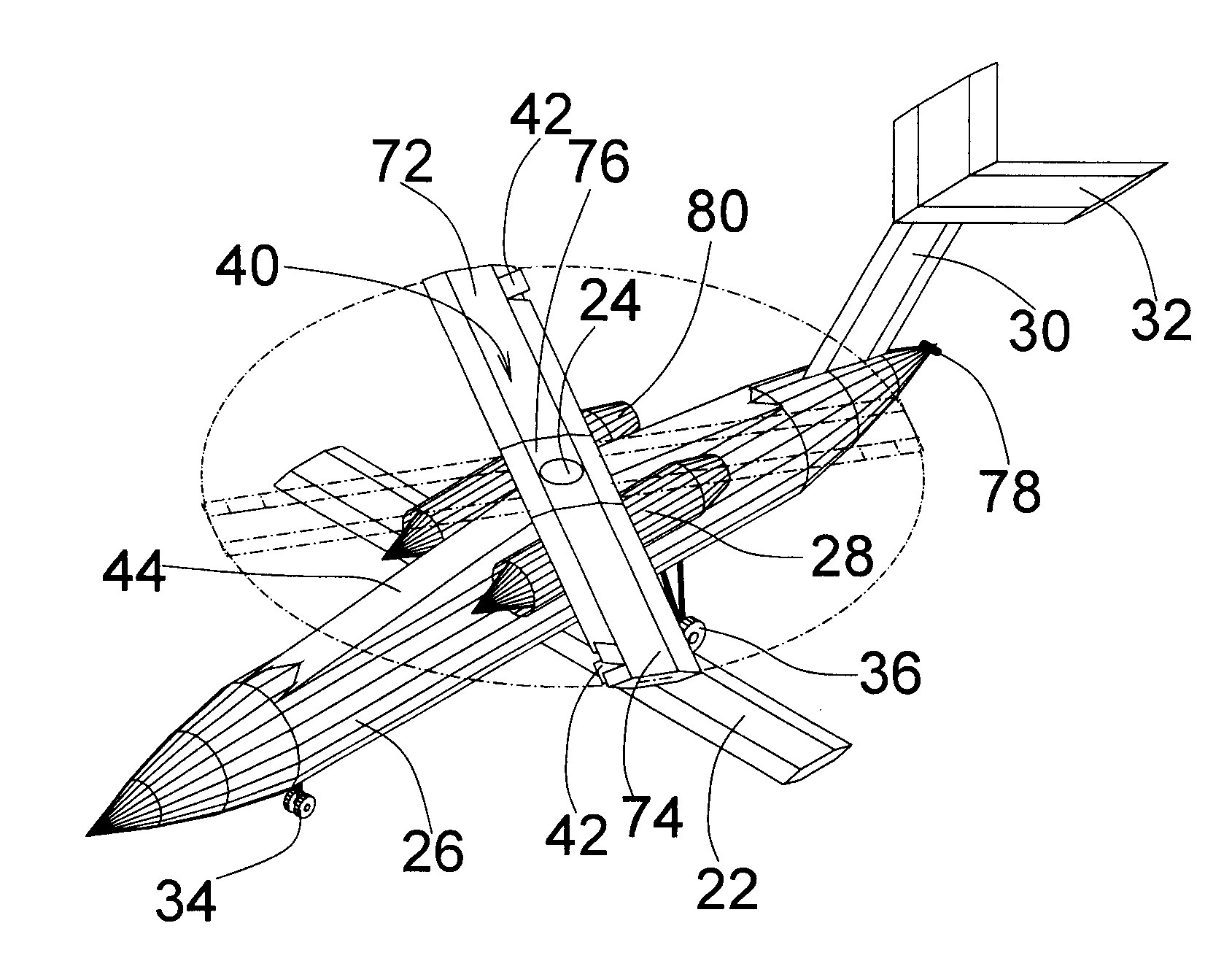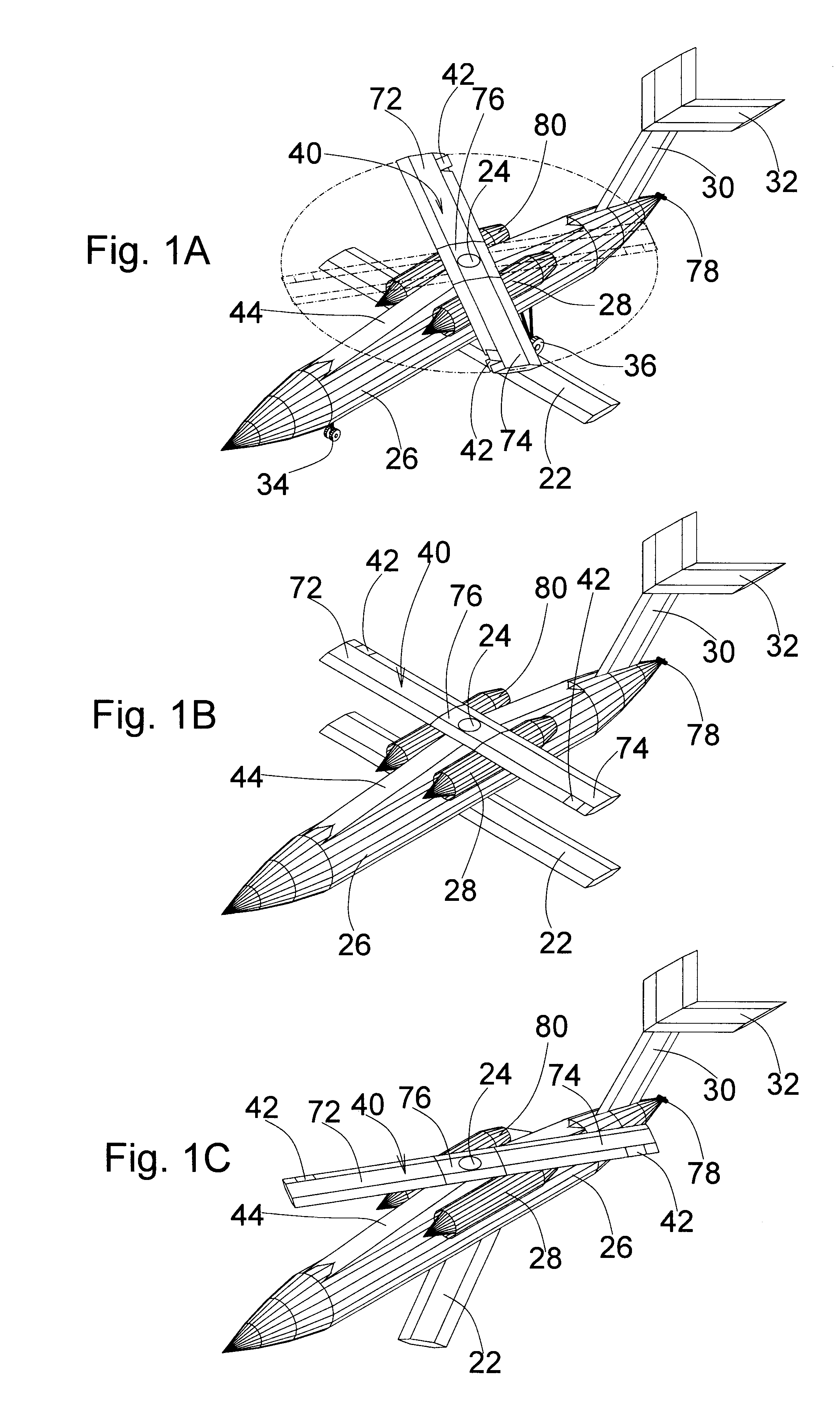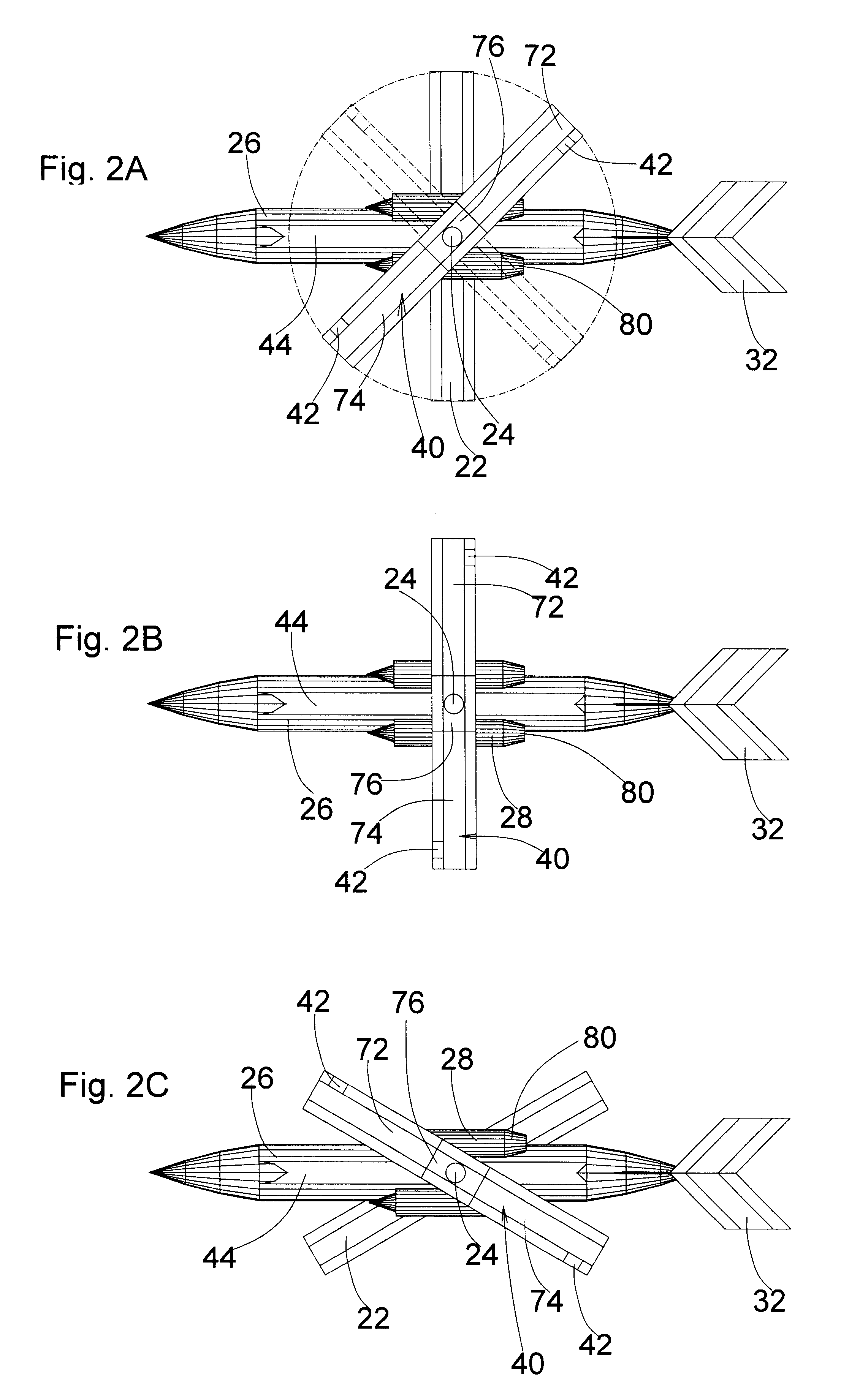Air vehicle having rotor/scissors wing
a technology of air vehicles and rotors, which is applied in the direction of vertical landing/take-off aircraft, efficient propulsion technologies, transportation and packaging, etc., can solve the problems of aircraft inefficient at airplane mode, low flying efficiency of invention, and compromising the key parameters of aerodynamic surfaces
- Summary
- Abstract
- Description
- Claims
- Application Information
AI Technical Summary
Benefits of technology
Problems solved by technology
Method used
Image
Examples
Embodiment Construction
As shown in FIG. 1A, an aircraft with rotor / scissors wing is at helicopter mode in the condition of V / STOL, hovering, or low speed flying. Rotor / scissors wing 40 is installed above fuselage 26 via shaft 24. Fairing 44 is constructed between rotor / scissors wing 40 and fuselage 26 to reduce drag and contain systems like engine power transmission system and control system. Rotor / scissors wing 40 consists of a hub 76 and two blades 72 and 74. The pitch angles of blades 72 and 74 can be adjusted by mechanisms installed in hub 76. As indicated in the figure, two jet nozzles 42 are located on both wingtips of rotor / scissors wing 40. In this figure, both of the jet nozzles 42 are open, propelling rotor / scissors wing 40 to rotate. The figure also shows one of the many ways to install engine or engines on the aircraft. In the figure, two engine nacelles 28 are installed on fairing 44 to shorten the route of sending engine exhaust gas to jet nozzles 42. Scissors wing 22 is rotatably mounted be...
PUM
 Login to View More
Login to View More Abstract
Description
Claims
Application Information
 Login to View More
Login to View More - R&D
- Intellectual Property
- Life Sciences
- Materials
- Tech Scout
- Unparalleled Data Quality
- Higher Quality Content
- 60% Fewer Hallucinations
Browse by: Latest US Patents, China's latest patents, Technical Efficacy Thesaurus, Application Domain, Technology Topic, Popular Technical Reports.
© 2025 PatSnap. All rights reserved.Legal|Privacy policy|Modern Slavery Act Transparency Statement|Sitemap|About US| Contact US: help@patsnap.com



